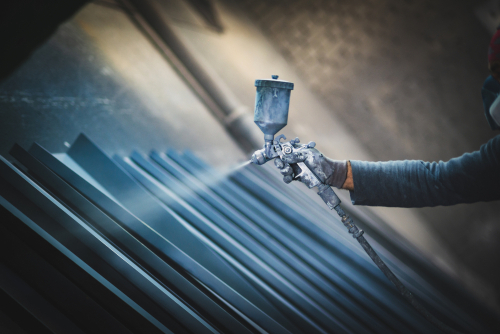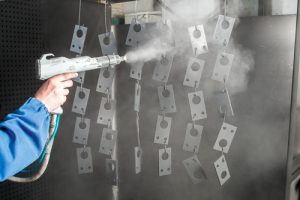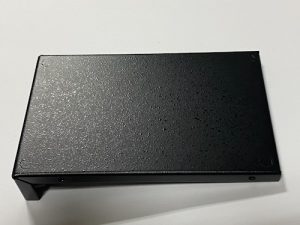
In the realm of metal processing, paint coating is a surface treatment that has both anti-rust protection and texture expression. Its applications span diverse industries, such as bicycles, automobiles, home appliances, instrument outer boxes, building materials, etc.
Different applications come with varying specification requirements. The two commonly used coating methods are powder coating and liquid coating. The main difference between them lies in their ingredients and characteristics.
First, let’s talk about what is powder coating and liquid coating.
Liquid coating
Liquid coating, a traditional painting method, exists in a liquid form and generally doesn’t require high-temperature cured. Ideal for parts with flat or smooth surfaces, it offers a variety of customizable colors. Moreover, its gloss, anti-corrosion, wear resistance and other properties surpass those of ordinary electroplating and anodizing.
In general, when components serve decorative purposes and demand an appealing appearance, it is recommended to use the liquid coating. Not only does it enhance the aesthetics, but it also ensures prolonged usage without surface corrosion or deterioration.
Powder coating
The pre-treatment for powder coating mirrors that of liquid coating, emphasizing a clean, oil-free, and dust-free surface. Chemical conversion coating, such as Alodine, is often applied to enhance corrosion resistance and coating adhesion on the surface.
Powder coating is a mixture of powder-shaped paint and curing agent. Unlike the liquid coating, it doesn’t require dilution and lacks solvents and liquid components. An electrostatic spray gun charges the powder, causing it to adhere to the surface. Subsequently, the coating is liquefied and cured in a high-temperature oven, resulting in higher wear and corrosion resistance. Therefore, it is a preferred choice for industrial applications.

In addition, there are some characteristic differences between powder coating and liquid coating:
1. Color
Powder coating is the original computer-prepared toner, which is not prone to color difference and can ensure color consistency in each batch of production.
Liquid coating offers color flexibility, allowing adjustments to any tone.
2. Coating thickness
Powder coating achieves a thickness of 40-150μm in one application, ensuring better coverage and high work efficiency. The quality of the coating film is more stable and has a low defect rate.
Liquid coating is prone to dripping or stagnation when applied thickly, and surface defects such as craters and pinholes may also occur due to solvent volatilization.

3. Durability
Powder coating excels in protecting coated objects, making it a preferred choice for items exposed to outdoor environments and potential collisions. Nowadays, bicycles and automobile spare parts are almost all powder coatings.
4. Environmentally friendly
Powder coating is 100% solid powder coating. The over-sprayed powder can be easily recycled and reused through the recovery system device. Therefore, the usage rate of powder coating can be almost 100%, minimizing the degree of environmental pollution.
Liquid coating may pose challenges with solvent volatilization and residual solvent disposal.
There are many options for coating methods, surface colors, textures, and thicknesses. Although the dry powder coating process has many advantages, the liquid coating may still be required in some cases. You should carefully evaluate the intended use of the part. You can also refer to the above information to find the ideal finish for your project.
You can find the photo display of the stamping parts made by us HERE!
